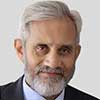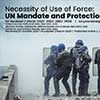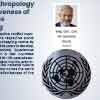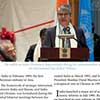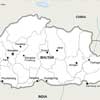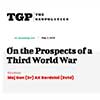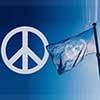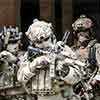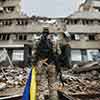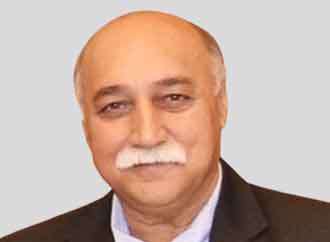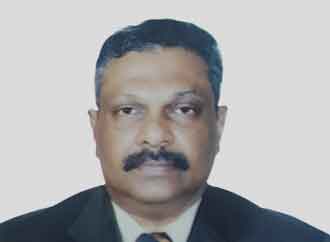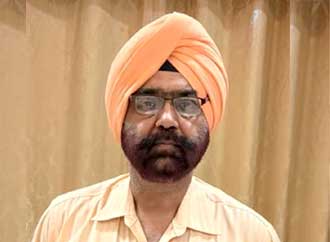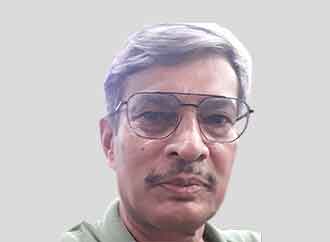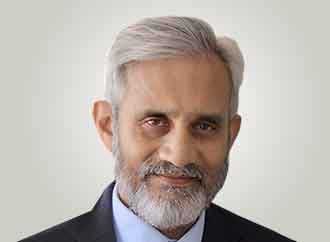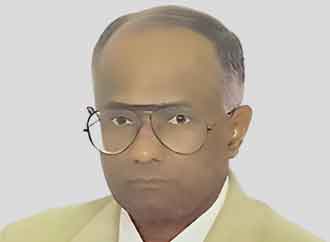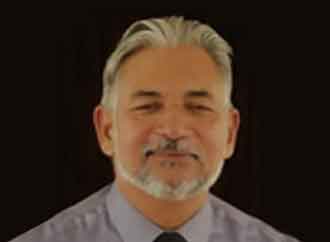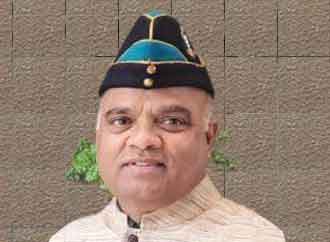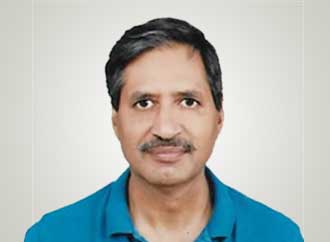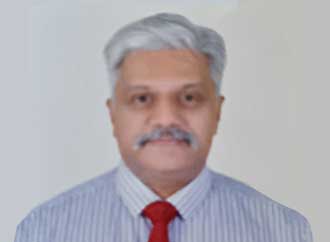Introduction
The latest initiative by the USA to bring an end to the Ukraine war has brought for some observer some movement into potential peace negotiations. Presuming Russia and Ukraine may be amenable and truly committed to a role for UN peacekeeping in the supervision of the ceasefire, there are then several scenarios that could be explored. Various authors have already explored the technical elements of a ceasefire and who should monitor the ceasefire.2 In addition, wider questions of feasibility of peacekeeping as a conflict management tool in Ukraine had been explored even earlier.3 This issue brief proceeds under the assumption that there will be a ceasefire and UN peacekeeping will be an acceptable option for supervising the agreement.
The Context
Adhering to the principles of peacekeeping is one of the primary conditions for a UN peace operation
to succeed.4 However, strictly adhering to the principles is not always easy because of their inherent
ambiguity in interpretation. Even if Russia and Ukraine agree to the UN to monitor a ceasefire, the
consent may not be absolute but conditional. Some of the conditions can even be implied. This will
be a challenge. Conditional consent would imply the host state agreeing to the deployment of the
peacekeepers, applying different conditions for the mandate, Status of Force Agreement (SOFA) and
use of force, etc. For example, before the deployment of UNOSOM (Somalia), the rebel leaders
remained sceptical of the international organisation’s likely hidden agenda. At the same time, the
main fighting factions desperately needed the UN to obtain economic aid. Ali Mahdi consented. But
Aideed had to be persuaded by Mohamed Sahnoun, the Special Representative of the Secretary
General (SRSG), to accept the deployment of 500 peacekeepers for the protection of humanitarian
convoys. Aideed’s consent was conditional. He withdrew his consent when Secretary-General Butros
Butros-Ghali recommended to the Security Council to deploy 3,000 peacekeepers without consulting
either Sahnoun or Aideed. This enraged Aideed, who considered this a breach of faith. What followed
immediately was an escalation of violence.5 Most of the time, the conditions will not be reduced to
writing but will be conveyed verbally during negotiations. Similarly, in the case of Ukraine, the UN focal point
must have explicit trust of Russia and Ukraine and understand how best to satisfy both
sides. Essentially, for the sake of peace, some strategic compromises will have to be made by the
parties to the conflict and the international community.
As regards the use of force, the biggest challenge will come from the non-state actors who are fighting on both sides. Arguably also regular troops (including foreign troops, e.g. North Korea, international volunteers on both side) will have to be handled appropriately. State and non-state actors and their forces may even continue to operate with tacit support from the main parties to the conflict. Another challenge is finding the TCCs that would be willing to participate in such a mission and would be acceptable to both parties. The member states from the West may neither be inclined nor acceptable to Russia. For instance, the idea of “Coalition of the Willing” is floating around for some time. Such a force, however, is meant for the security of Europe and Ukraine, either in the form of a deterrent force in the absence of a ceasefire agreement or a proper peacekeeping mission.6 While such an arrangement is most likely to be okay for Ukraine for peacekeeping, for the very reason of the Russian invasion, it is not going to be acceptable to Russia. At the same time, it might be quite possible to find some neutral European nations (even if smaller in size) to volunteer to contribute their soldiers, depending on the overall framework of the mission and the mandate. At best, their contributions can only be very small in number. Even the capable nations from the global South may not be inclined to make political and military sacrifices by getting caught in the hostile space, including the mercenaries. These being political challenges, the UN and those who are taking the lead in brokering a ceasefire, hopefully, will be able to find some kind of acceptable solution. Nations contribute to peacekeeping based on their national and strategic interest. Therefore, even listing the likely and willing contenders for peacekeeping will be difficult.
Force Structure of the Mission
Considering the likelihood of a permanent ceasefire, and there is a consensus for UN peacekeeping
in the UN Security Council, the following options can be studied:
a. Armed contingents comprising well-equipped and well-trained peacekeepers. Armed contingents will be expected to enforce the ceasefire violations. The consequences of enforcing peace between Russia and Ukraine might not only trigger another conflict but will bring fatality to the peacekeepers. Enough resources would be required to cover 400 km of land front, as well as the naval areas of the Black Sea. Besides the geography or complexities of the terrain, the structure of a peacekeeping force will depend on other factors such as the aim and mandate of the mission, etc. This can be commented on only after a field visit by the technical team of the UN. Nevertheless, going by the experience of past missions, an armed peacekeeping mission for Ukraine will have to be much bigger than what UNPROFOR was.
b. Lightly armed peacekeeping mission. In case of a lightly armed mission, the weapon is expected to be used only for self-defence. Should there be a recurrence of violence, lightly armed missions can at best defend themselves against small arms fire, but only for a limited period. To put it differently, it is to provide only the bare minimum staying power until the peacekeepers can be extricated to a safe zone.
c. Unarmed Military Observer Mission. An unarmed military observer verification mission comprising peacekeepers from neutral countries supported by a liaison and coordination mechanism is likely to be more suitable to facilitate a ceasefire. Reporting by unarmed observers drawn from neutral countries will be more impartial.
d. Civilian peacekeeping. If acceptable to the main parties to the conflict, even a UN civilian observer mission in line with the Organisation for Security and Cooperation in Europe’s Special Monitoring Mission (OSCE SMM) is another option worth considering. So far, these observers have performed well in various missions.7
e. Multi-Dimensional observer mission. An unarmed observer mission comprising military, civilian and police peacekeepers can also be more effective and provide credibility to the ceasefire verification mechanism. Military peacekeepers would find it easy to deal with foreign militaries in a hostile environment because of their familiarity with the basic military culture. There is potential for civilians to participate in UN observer missions either independently or better, by complementing the military peacekeepers in an integrated UN observer mission. Civilians can also bring with them certain nuances of peacekeeping that may go unnoticed by the military peacekeepers in the normal course.8 Apart, police are equipped with special investigative skills. There can be situations when there are allegations and counter-allegations, police investigation skills come rather handy. The best combination can be found when forensic experts can be built into each team or kept centrally within easy reach.
Recommended option
Under Chapter VI, peacekeepers, when armed, can use force in self-defence and the defence of the
mandate. Use of force, perhaps, is the most controversial of the three principles. The inherent
ambiguity in its interpretation, at times created by the scholarly debates and legal experts, is used by
some unwilling TCCs not to use force, even while it is justifiable. Besides, the interpretation of how
much the minimum is varies. For example, Gen Rupert Smith, who was the commander of the UN
force in Bosnia, the application of force should be able to alter the mind of the decision maker (he
meant against whom the force has been applied).9
In Ukraine, a peacekeeping mission with armed contingents, unless stronger than both the Russian and Ukrainian armed forces, will not be able to defend itself. For example, despite being armed with heavy arms, including main battle tanks and howitzers, which is rare in UN peacekeeping, UNIFIL was not able to prevent an all-out conflict between the IDF and Hezbollah. As for self-defence, UNIFIL peacekeepers were forced into bunkers by the IDF and moving outside the bunkers was possible only when permitted by the IDF. Therefore, there was no utility for armed contingents in South Lebanon, even for self-defence. If one were to pinpoint the reasons for the success of UNIFIL until the recent conflict, it was more because of an effective liaison and coordination mechanism of UNIFIL and less of the robust structure of the mission. Such a mechanism essentially comprises arresting the potential triggers of a major conflict at the tactical level (communicating, collaborating and cooperating).
There will always be a threat to peacekeepers, regardless of the mandate, structure of the force and how capable they are. Before the IDF invasion of South Lebanon on 1 October 2024, the author was under the impression that a robust force like UNIFIL was a political deterrence to both the IDF and Hezbollah. But the recent conflict proved him wrong. Deterrence relies on the perceived ability and willingness to follow through on threats or consequences. If the credibility of follow-through is lacking, deterrence may fail. For this, besides the peacekeepers willing to make sacrifices, it needs political and military support from the TCCs. If such support does not come through because of political compulsions, arming peacekeepers to their teeth is meaningless. Would a peacekeeping mission in Ukraine be any different?
Besides, armed contingents, depending on their attitude to peacekeeping, could be seen as intrusive and offensive. Therefore, deploying unarmed observers to supervise the ceasefire agreement will be more cost-effective. In all peacekeeping missions, there is a section of Public and Civil Affairs, generally headed by a senior and seasoned civilian staff member. This section coordinates and supports military peacekeepers with the political content of the conflict. Time is of paramount importance. Hence, integrating them at the tactical level will help diffuse a situation and produce better results.
Though not the primary role of peacekeeping, another challenge will be how best peacekeepers can adapt to peacebuilding-related activities. Post the ceasefire agreement, several international agencies would be working around the clock on reconstruction activities. However, the local populations who have lost lives of their near and dear ones and property, will look up to the peacekeeping missions to chip in, especially in the fields of reconstruction and health care, in their respective area of operations. When a multi-dimensional observer mission is combined with substantive capabilities for infrastructure development (such as a force engineering company), demining and medical care (Level III hospital), the mission will get local legitimacy and will be more acceptable to either side, thereby adding to the credibility of the UN. Given the current challenges and looking at the likely advantages over other options, a Multi-Dimensional Observer Mission combined with force assets (as explained above) seems to be more suitable for ceasefire verification in the Ukraine War.
Conclusion
The success of a peacekeeping mission in Ukraine hinges on several crucial factors. Firstly, the
mission should only be deployed after a ceasefire agreement has been reached, and there is a genuine
chance of achieving partial success. Without a reasonable prospect of success, investing in a
peacekeeping mission would be futile.
Like true for all missions, even in Ukraine, a peacekeeping mission, more specifically a mission with formed contingents (armed), will face several strategic and operational challenges. Among many, ambiguity in the UN peacekeeping norms, especially adherence to the principles of peacekeeping, will be a big challenge. Apart, interpretation of the mandate, operational interoperability among the contingents; finding well-equipped and well-trained peacekeepers; presence of non-state actors; interference by the TCCs (in terms of issuing national caveats); restriction of freedom of movement by the parties to the conflicts, including the non-state conflicts; difficulty in removing UXOs from the operational areas; likelihood of ceasefire violations and difficulty to verify the violations, are some of the main challenges that are likely to come in the way of mandate implementations. Such challenges, however, are not insurmountable. The centre of gravity of the success of a peacekeeping mission in Ukraine at the strategic level is the continuous presence of consent from Russia and Ukraine. Considering that the UN Security Council and the member states would have risen to fully support a peacekeeping mission in Ukraine (if accepted by both sides) and ensure presence of the consent, if the willing member states, instead of issuing caveats, encourage their peacekeepers to make it their obligation to implement the mandate, UN peacekeeping in Ukraine is a doable.
Another important success factor is the need for effective leadership. A leader who can think and act from both a political and military perspective - a rare combination of skills. In the context of Ukraine, the leader heading the peacekeeping mission must be able to navigate the delicate balance between Russia and Ukraine, where a single misstep could light the short fuse and reignite the conflict. A military practitioner with diplomatic skills, adequate mastery over the language, who can think and make quick decisions, factoring both political and military dimensions, would be ideal for this role. While with adequate training, a military leader will be able to wear the common hat of a political and military leader, the opposite is not true. Furthermore, the Ukraine conflict has highlighted the renewed possibility of large inter-state conflicts, making it essential to explore alternative models for conflict resolution.
Foot Notes:
1. Director - Centre for UN Doctrine & Policy, The United Service Institution of India, Rao Tula Ram Marg, New Delhi –
110 057.
2. Cedric de Coning, “What Would It Take for a Ceasefire between Russia and Ukraine to Hold?” IPI Global Observatory,
March 18, 2025, .
3. Richard Gowan, “A Tentative First Look at Options for Peace Operations in Ukraine,” Crisis Group, March 24, 2022,
4. United Nations Peacekeeping Operations: Principles and Guidelines (New York: UN Department of Peacekeeping
Operations, 2008), 31-40.
5. Lise Morje Howard, UN Peacekeeping in Civil Wars, (Cambridge: Cambridge University Press, 2008), pp. 25-27.
6. John Karlsrud and Yf Reykers, “Coalitions for Ukraine: Moving Beyond Stop-gap Measures“, IPI Global Observatory, 2 May 2025, .
7. André Härtel, Anton Pisarenko, and Andreas Umland, “The OSCE’s Special Monitoring Mission to Ukraine: The SMM’s
Work in the Donbas and Its Ukrainian Critique in 2014–2019,” June 7, 2021.
8. Personal experience of the author.
9. Rupert Smith, “Bosnia, Using Force Amongst the People,” The Utility of Force: The Art of War in the Modern World
(England: Penguin, 2005), pp. 332-379.
Major General (Dr) A. K. Bardalai, is an Indian Army Veteran and former Deputy Head of the Mission and Deputy Force Commander of UNIFIL.
